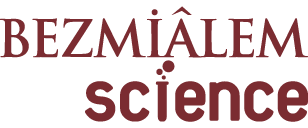“Therapeutic Options and Potential Vaccine Studies Against COVID-19”
The novel coronavirus-2019 (COVID-19) disease was first reported in late 2019 and then turned into a pandemic in the following days and months of 2020. Although the current treatment of COVID-19 is based on anti-inflammatory and anti-viral agents no complete cure is available for this disease. The solution to the pandemic problem seems possible only via two ways, either effective drug therapy or the development of an effective vaccine.
This special issue is gathered very valuable research results or review articles discussing the experiences of clinicians regarding the treatment of COVID-19 or the recent developments in vaccine production. Our first article in this special issue covers the experiences of Turkish clinicians in the treatment of COVID-19 using hydroxychloroquine (HCQ), azithromycin, and favipiravir. Sarikaya et al. have reported that hypertension and diabetes mellitus (DM) have been the most common comorbid reasons. They also have concluded that in patients receiving treatment based on Favipiravir; advanced age, DM, chronic heart disease (CHD), Chronic kidney disease (CKD), troponin-I elevation, and secondary bacterial infections are associated with mortality. Chronic renal failure (CRF) and troponin-I elevation have been defined as predictors of mortality.
In the second article, Mayda et al. have been extensively reported the history of pandemics, opening a new window for better understanding the current situation of human beings in fighting with microbial diseases. The interesting impression of this article on readers is that protection hasn’t changed much from İbn-i Sina’s “El Kanun fi’t Tıb” book to today. These recommendations consist of personal hygiene, distance, and stress-free life.
The third article by Gepdiremen et al. tackles the future therapy of COVID-19 using Viral S-glycoprotein, transmembrane protease serine 2 (TMPRSS2), and angiotensin-converting enzyme-2 (ACE-2) inhibitors as extracellular media components. The authors emphasize the high ability of SARS-Cov viruses in mutation and defend the idea that instead of developing vaccines for each mutant virus, it could be more effective to synthesize de novo drugs like ACE-2 or TMPRSS2 blockers to specifically block spike binding sites of the target cells and prevent virus intrusion, especially at the extracellular media, for future pandemics.
In the fourth article Anacak et al. discuss drug repurposing in the treatment of COVID-19. Repurposing is a process that uses drugs that have been previously defined for certain indications in the treatment of a new disease. authors discuss using several techniques including chemical structure-based methods, ligand-based methods, methods based on bioinformatics data such as transcriptomic based drug repositioning, literature mining-based drug repositioning, and target-based approaches. In conclusion, the authors mention that the recent efforts to develop a treatment for COVID-19, are employing drug repositioning rather than drug and target-based strategies. They also mention that some drugs that were investigated using the disease-based approach strategy did not make a significant difference in clinical studies.
Another drug repurposing study is done by Kesmen et al. which approaches the therapeutic effects of ivermectin an FDA-approved drug as a broad-spectrum antiparasitic compound in COVID-19 treatment. They report that the molecular mechanism of this drug could be related to blocking the nuclear entry of importin alpha and beta-1 (IMPα/β1) mediated viral protein, inhibition of TNF-α and interleukin (IL)-1β production and consequently causing an increase in IL-10 production and activation of the NF-κB pathway. The authors also mention that ivermectin and its derivatives are protected by patents for some indications, hence, patent protection research and appropriate modifications could be useful to come over the obstacles on the way of serving health to the public.
The sixth article of the current special issue is a review entitled “An overview of COVID-19 medicines in current guidelines” by Guler and Gokce which covers guidelines for adult and child patient drug treatment and, also, the Potential antiviral agents used in the treatment process of COVID-19. Their article covers approved doses for Hydroxychloroquine, Azithromycin, Favipiravir, Lopinavir, and Ritonavir. Furthermore, the authors discuss the potential of Remdesivir, Nafamostat, Ribavirin, Oseltamivir, Penciclovir/ acyclovir, Ganciclovir, and Nitazoxanide.
Similarly, Arsoy and Ozdemir have prepared a very comprehensive review of “Current therapeutic interventions for COVID-19”. The authors mention that although specific drugs began to be developed, the first potential candidate drugs were drugs such as broad-spectrum antibiotics, antiviral agents, anti-parasitic agents, and interferon, which were planned to be used with similar indications before the pandemic. Their article contains three very useful tables regarding supportive treatment options other than specific medications, classification of various drugs tried in COVID-19, and various combination therapies in COVID-19 disease. These tables are followed by the detailed information about Chloroquine and Hydroxychloroquine and their use in pregnancy and lactation, Mefloquine, Remdesivir, Interferons, Lopinavir/Ritonavir, Ribavirin, Favipiravir Corticosteroids, Vitamin C, Teicoplanin, Ivermectin, Tocilizumab, Oseltamivir, Emetine, Intravenous, Immunoglobulin and other Immunomodulator Agents, Umbilical, Cord Mesenchymal Stem Cell (UC-MSC) Transplantation.
In a very modern approach to anti-viral therapies, Arisoy and Comoglu discuss the possibility of using nano-drug delivery systems in the treatment of COVID-19. Nano drug delivery systems with the ability to target special organs, tissue, or protein can provide higher efficacy with the lower doses of drugs which facilitates the drug application in toxic doses. Authors emphasize the ability of liposomes the most known nano-drug delivery systems in targeting lungs. They mention that liposomes are widely used drug carriers by inhalation due to their safety and ability to provide controlled drug release in the lung. These carriers can hold a wide variety of therapeutic molecules for delivery to peripheral airways in large volumes using medical nebulizers. Pressurized metered inhalers, soft spray inhalers, and dry powder inhalers can deliver relatively small amounts of medication to the lungs compared to medical nebulizers that can deliver large volumes using simple liposome preparation techniques. They conclude that it is important for liposomes to be used in COVID-19 treatment due to their biocompatibility, targeting the region, and their ability to create a trapping structure.
In a very important article of our special issue, Prof. Kocyigit discusses the advantages and disadvantages of using Vitamin C in the treatment of COVID-19. The author mentions that normally, Vitamin C is a powerful antioxidant vitamin, however, besides that, it shows a pro-oxidant effect in the presence of pharmacologically high doses of transition metals such as iron and copper. Thus, in antiviral treatment, while it was desired to benefit from both antioxidant and pro-oxidant effects of high-dose Vitamin C it is possible to cause serious damage in on tissue due to the cumulative effect of increased oxidative stress caused by disease inflammation increased the pro-oxidant effect of Vitamın C.
Topcu et al. have presented a very inclusive review on the effects of alkaloids, the natural nitrogen-bearing compounds of plants, fungi and marine organisms in COVID-19 treatment. The authors gather the information regarding the anti-corona virus efficacy of indigo, sinigrin and β-sitosterol, natural alkaloids from Isatis indigotica, showing their activity via inhibiting the cleavage activity of the 3-chymotrypsin-like protease in cell-free and cell-based assay. They also mention the SARS-CoV-2 and SARS-CoV inhibiting activity of two natural alkaloids 10-hydroxyusambarensine and cryptoquindoline from African plants. From Chinese medicinal plant Lycoris radiata, lycorine is being reported in this review as an anti-SARS-CoV alkaloid. In the same manner, antiviral activity of bis-benzylisoquinoline alkaloids; cepharanthine, tetrandrine and fangchinoline in significantly inhibiting human coronavirus HCoVOC43 is being reviewed by the authors. In conclusion the authors point out to the use of two very famous compounds Favipravir and Remdesivir as emergency alkaloids in the fight with viral pandemics.
In the final article of this special issue about treatment strategies, Kaymakci and Guler propose the use of Cordyceps sinensis and Cordyceps militaris the entomopathogenic fungi which are used for their antiinflammatory, immunomodulatory, lung improving, and antiviral functions in Traditional Chinese Medicine as anti-Corona virus plants. They conclude that according to previous research, C. sinensis and C. militaris can be effective agents for the prevention and treatment of COVID-19 by immunomodulating, reducing the proinflammatory cytokines, preventing lung fibrosis, improving tolerance to hypoxemia, and inhibiting the viral enzymes.
In the second section of this special issue, potential vaccine studies against COVID-19 are being discussed in two very comprehensive articles by Kazak et.al and Mayda et.al. These authors are agreed in the concept that three pandemics caused by SARS, MERS, and SARS-CoV-2 are believed to have started as a result of bat coronaviruses that crossed the species barrier. Therefore, other outbreaks are likely to occur in the future due to the unlimited supply of coronavirus available in the bat population. Prevention is always the best treatment, and continuous viral surveillance of wild animals is extremely important for potentially emerging CoVs. Clinical trials begin with small safety studies in animals and humans, followed by much larger studies to determine whether a vaccine induces an immune response. As a result of all these, it may take many years for the vaccine to emerge, so fast, reliable and easy-to use viral test kits should be developed on the research side. The continuous development of vaccines and antivirals will provide an assurance of fighting and controlling emerging CoV diseases.
As guest editor, I am so proud and honored of receiving, reading, reviewing, and editing above mentioned scientifically precious works. I need to thank all authors and reviewers who have contributed in the best possible way in generating this special issue. I also owe to thank Prof. Dr. Adem Akcakaya the Editor in Chief of the journal Bezmialem Science. Our success with this special issue would not be possible, had he not laid the groundwork already.
On behalf of all co-editors of Bezmialem Science, I would also like to express my best gratitude to the Rector of the Bezmialem Vakif University, Prof. Dr. Rumeyza Kazancioglu, and the esteemed Board of Trustees for their financial and moral support from this special issue.
Assist. Prof. Dr. Fatemeh Bahadori,
Bezmialem Vakıf University,
Faculty of Pharmacy,
Department of Pharmaceutical Biotechnology, İstanbul, Turkey



